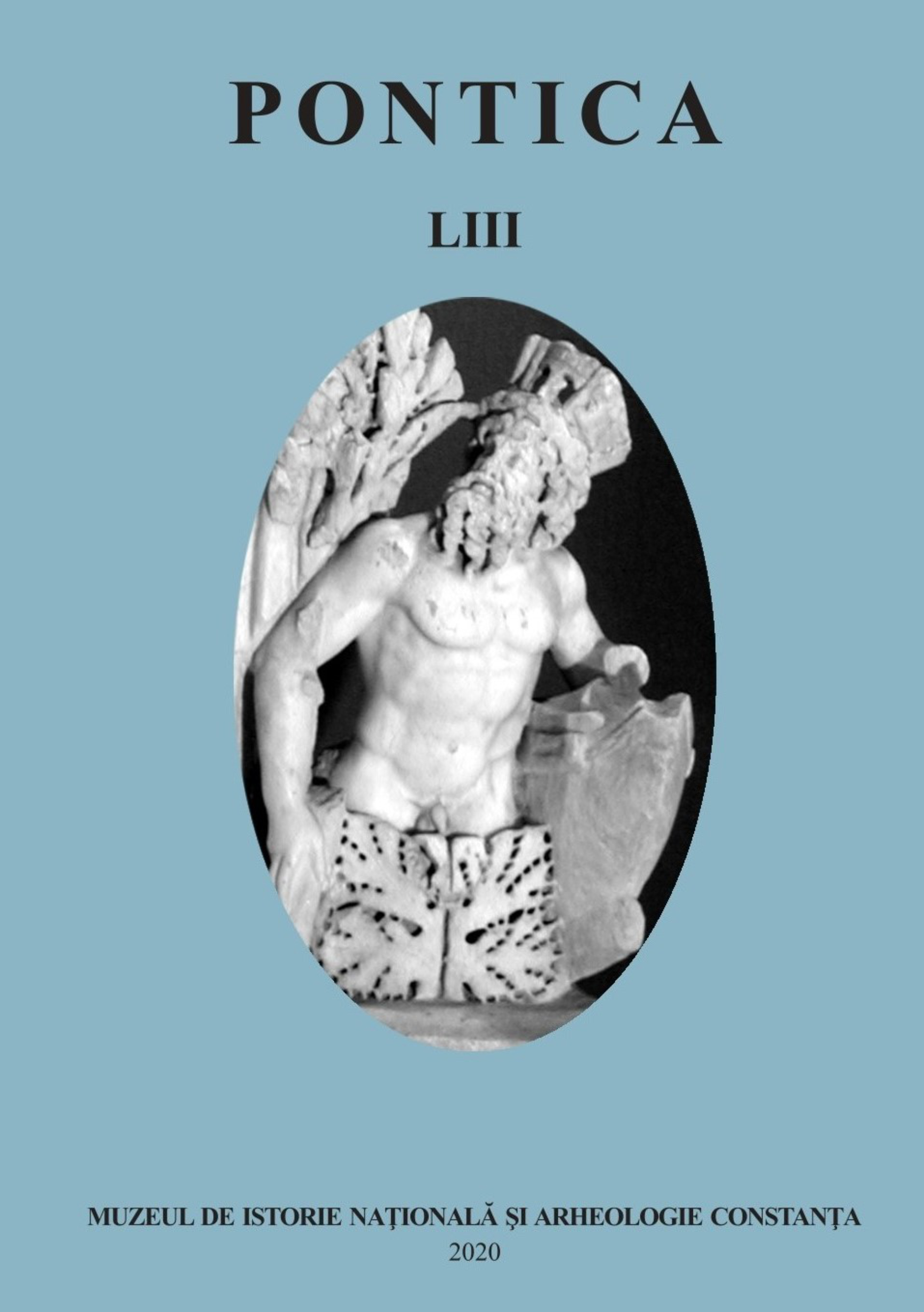On the Image of the Applique of Phiale B 71 from Tomb 1/II in the Mogilanska Mogila Tumulus
On the Image of the Applique of Phiale B 71 from Tomb 1/II in the Mogilanska Mogila Tumulus
Author(s): Denis BorisovSubject(s): History, Anthropology, Social Sciences, Archaeology, Ancient World
Published by: Muzeul de Istorie Națională și Arheologie Constanța
Keywords: Phiale B 7; Tomb 1/II; Mogilanska Mogila tumulus; coin images; Aphrodite; nymph; phiale;
Summary/Abstract: The following article is dedicated to identifying the image on the applique on phiale B 71 from Tomb 1/II in the Mogilanska Mogila tumulus. Since the discovery of tomb 1/II in 1965 and its rich grave goods, among which is phiale B 67, there is a debate among scholars about the identification of the female image on the applique at the internal part of the omphalos. Ivan Venedikov, one of the researchers of the Mogilanska Mogila tumulus, has proposed that the image on the applique is that of Aphrodite. Bogdan Nikolov claims that the image is that of Artemis, without confirming his theory with credible evidence. Most Bulgarian scholars such as Totko Stoyanov and Nartsis Torbov, accept Venedikov’s theory. Some, as Totko Stoyanov, even have proposed an identification of the figure as a nymph. The origin of the phiale is also a subject of much debate among the scholars. There are two opinions on the origins of the phiale - the phiale is a product of a Greek master and a Greek workshop and the other is that the phiale is the work of a Thracian master, who was an apprentice at a workshop at Cyzicus. In the collections of the Regional Museum of History in Vratsa, a bronze die is kept. The circumstances around the discovery of the die are unknown. On the surface of the die, there is an image of a female head, turned right with a kekriphalos, or headscarf, on her hair. Scholars like Dobrin Antonov and Nartsis Torbov have suggested a similarity between the image on the die and the image on the applique on the omphalos of phiale B 71 from Tomb 1/II in the Mogilanska Mogila tumulus. Others like Totko Stoyanov have suggested a parallel of the image on the omphalos of phiale B 71 with the images on the reverse side of coins, minted in Cyzicus and Lampsacus. Dobrin Antonov and Nartsis Torbov have suggested a connection between the Vratsa matrix and coin images. A common feature among the image on the omphalos of the phiale and the coins of Cyzicus and Lampsacus are the grape-shaped earring and the pearl necklace. Those pieces of jewelry are attested for the first time in the coinage of Syracuse, struck during the reign of Dionysios I (405 -367 BC), which has an image of the nereid Arethusa, wearing grape -shaped earrings and a pearl necklace. These coins in the late fourth-early third c. BC inspired the production of the so - called “Arethusa cups” or kilikes with a medallion with the image of Arethusa, taken from a Syracusan coin, in Cales (Calvi Risorta) in Northern Campania. This practice of decoration of vessels with a coin image is proposed for metal ware as well. Taking into account the theories examined in the article and the parallels suggested by scholars, it is possible to assume that the image on the omphalos of phiale B 71 is that of Aphrodite or a nymph.
Journal: Pontica
- Issue Year: 2020
- Issue No: 53
- Page Range: 169-190
- Page Count: 22
- Language: English

